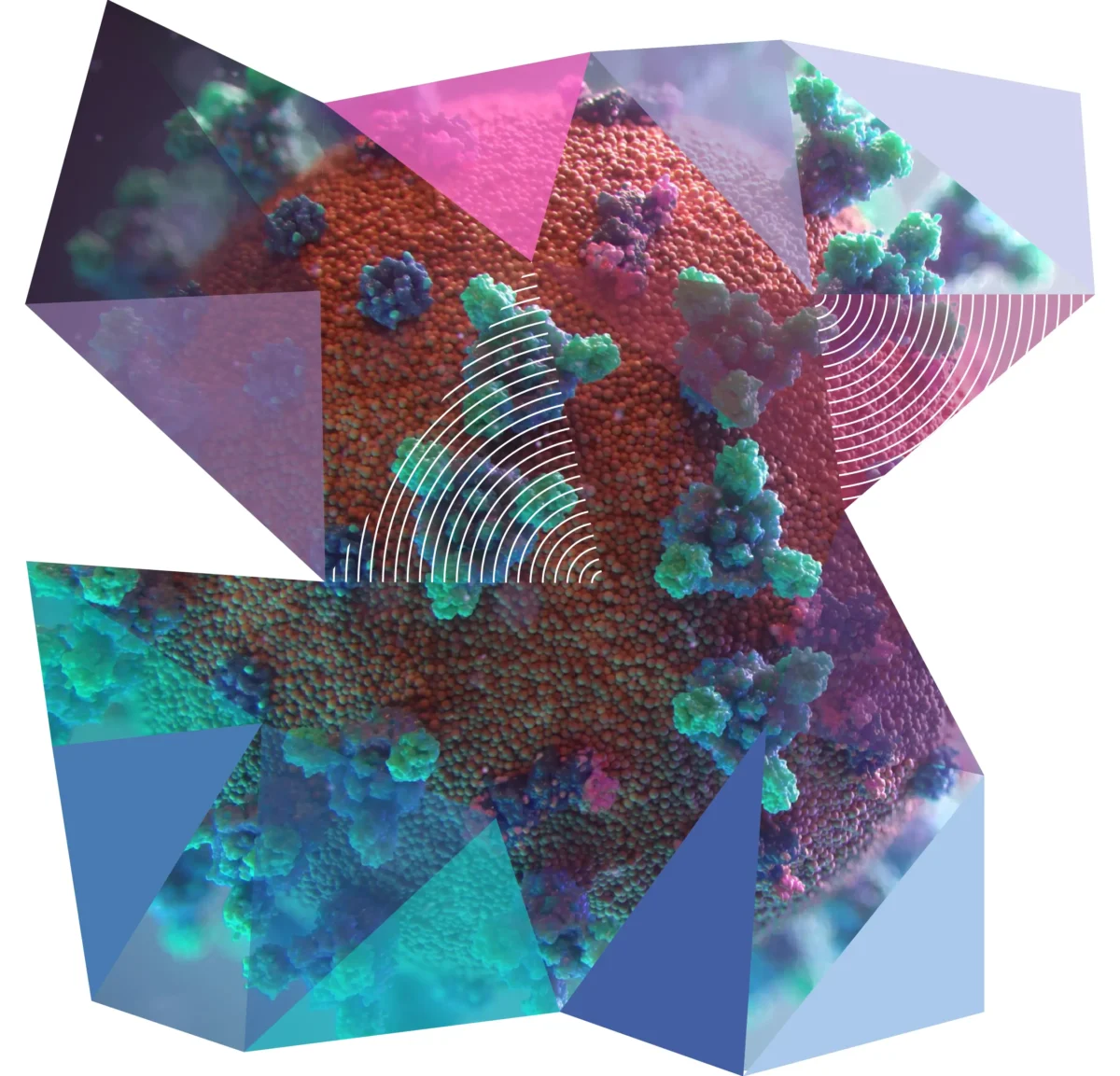Fighting together: how scientists joined forces to combat the pandemic
Throughout history, infectious diseases have been a constant presence, and this is still the case today, with frequent outbreaks.
According to Prof. Ilaria Capua, one of Italy’s leading virologists, Senior Fellow in Global Health at Johns Hopkins University and SAIS Europe, “the question is not if there will be another pandemic, but when”.

COVID-19 emerged in late 2019 and became a pandemic in March 2020. Already in April 2020, COST Actions initiated an informal Trans-COST Action Network on COVID-19, bringing together scientists with different expertise.
The story of the COST COVID-19 network is an inspiring tale of resilience, teamwork, and innovation as scientists came together to face the unprecedented challenges of the pandemic. It’s not just a story about science; it’s a story about humanity’s collective strength in the face of the unknown.
Adapting to uncertainty
In March 2020, Europe responded to the COVID-19 pandemic with a widespread lockdown, closing university research units and laboratories, except those dedicated solely to diagnostic testing. The challenge was clear: researchers accustomed to studying resistance in cancer drugs were overwhelmed by a lack of expertise in virology, immunology, or emergency care.

“Pandemics are transformative. When they reach a certain level and spread at a certain rate, they cause the systems we know to collapse”.
Prof. Ilaria Capua
In the midst of this uncertainty, the COST Action New diagnostic and therapeutic tools against multidrug-resistant tumors (STRATAGEM), dedicated to research into drug resistance in cancer, sought a way to focus its activities. Prof. Chiara Riganti, Chair of the Action, gives an insight into the development and achievements of the ‘Actions against COVID-19‘ network and outlines COST’s role during the pandemic.
Creation of the Network of Actions against COVID-19
“The question posed by the scientists was simple but urgent”, says Chiara Riganti, “how can I contribute to the fight against the pandemic?” The idea was to involve scientists working remotely who were tackling the same problem.
The journey began by making contact with other scientists through the COST Association, which led to a call to the scientific community to express interest in collaborative initiatives. By April 2020, online meetings had become the norm. “We started regular online meetings with the first nine COST Actions that responded to our “call to the army”. We had a few virologists, but we gathered epidemiologists, molecular-and-cell biologists, biochemists, chemists, pharmacists, pathologists, and public health experts”. The primary objective was to map the expertise within each Action and to provide a platform for scientists with complementary skills to collaborate.

The initiative gained momentum as the COST Association endorsed it and recruited more Actions. The Network of Actions emerged, comprising 77 COST Actions. In response to Action requests, and to facilitate the networking process, COST produced a booklet containing details of all the Actions wishing to join and collaborate.
Reflecting on this collaborative effort, Prof. Riganti acknowledges the unique environment provided by the COST Association, which facilitates encounters between researchers from different backgrounds. “As COST’s mission is to provide networking tools for researchers, we did not see the need to create an additional structure for scientific interactions,” she concludes.
Key milestones of the collaborative network
The collaborations have resulted in numerous publications, software, databases, and hygiene solutions that have been adopted worldwide. One notable example is the integration of the COVEX online tool and database, which predicts drug-target interactions. It is now also part of the REPO4EU’s pandemic preparedness strategy. This integration accelerated the identification of antiviral drugs in the early stages of the pandemic, which were later improved by pharmaceutical companies.
Scientists studying the pathogenesis of diseases as diverse as cardiovascular, musculoskeletal, neurological and genetic disorders took a further step by sharing patient cohorts and relevant data, as well as biomarkers related to inflammation and immunology. By correlating this information across diseases and countries, a deeper understanding of the impact of COVID-19 was achieved. It became clear that Sars-CoV-2 was not confined to the lungs but was a multi-organ disease, leading to a paradigm shift in treatment and improved quality of life and prognosis for patients. The common view is that collaborative efforts don’t just provide solutions, but have the potential to positively transform healthcare.
“In unity we find not only answers, but the potential to change healthcare for the better.”
Prof. Chiara Riganti, Chair of the COST Action STRATAGEM

Beyond the tangible results, the experience highlighted a valuable lesson – the ability to quickly and effectively bring together scientists with different expertise and nationalities. “This model forged in the COVID-19 pandemic is a blueprint not only for future pandemics, but also for emergencies yet to come,” says Chiara.
Lessons and insights
According to Prof. Riganti, “The lesson is clear: a comprehensive plan at all levels – research, work activities, and healthcare organisation – is essential for effective emergency management. It’s not just about tackling immediate threats, but also preventing deaths from diseases that may be overlooked. How we deal with emergencies shapes not only our current resilience but also our future resilience”.
“It was essential for COVID-19 to build networks to bring together knowledge from different aspects of the problem. A network of virologists, clinicians, and data scientists was established. COST’s experience has been very valuable in this respect”.
Prof. Ilaria Capua
Throughout history, despite the persistence of diseases and pandemics, there has been a consistent trend towards a gradual reduction in mortality. Improved health care and a better understanding of the factors that lead to pandemics have been instrumental in mitigating their impact.
Additional information
Watch our video interviews with Prof. Riganti and Prof. Capua:
COST Actions and COVID-19 initiatives
REPO4EU – What is drug repurposing?
CoVex – Coronavirus Explorer tutorial
Joining European Scientific Forces to Face Pandemics: Trends in Microbiology (cell.com)
